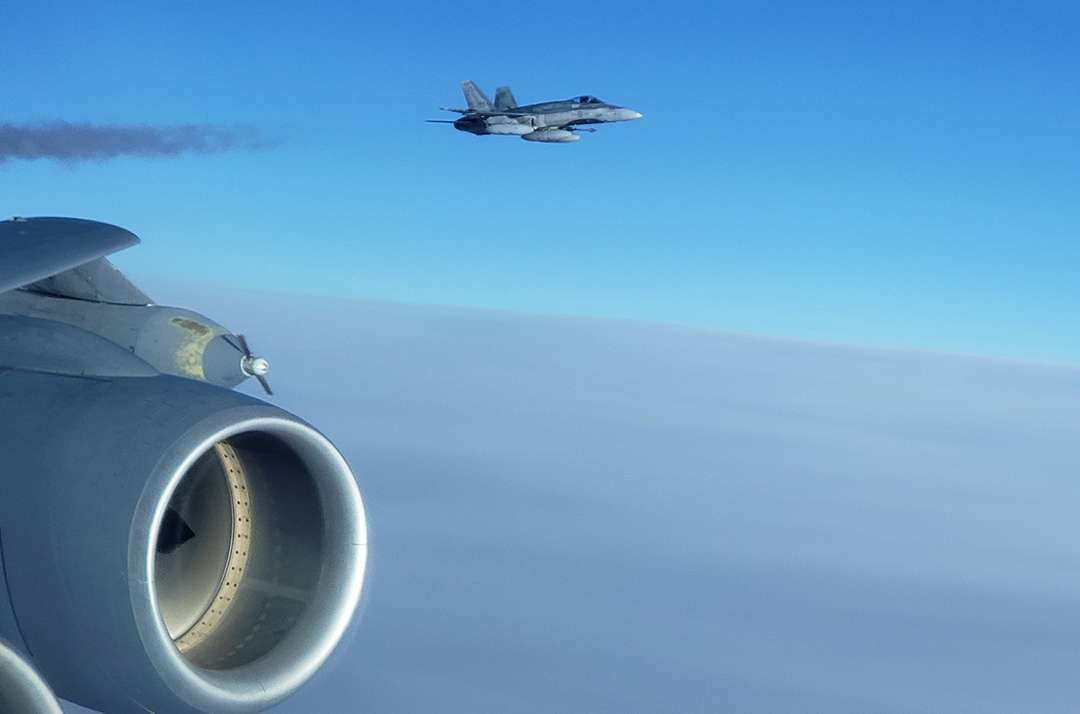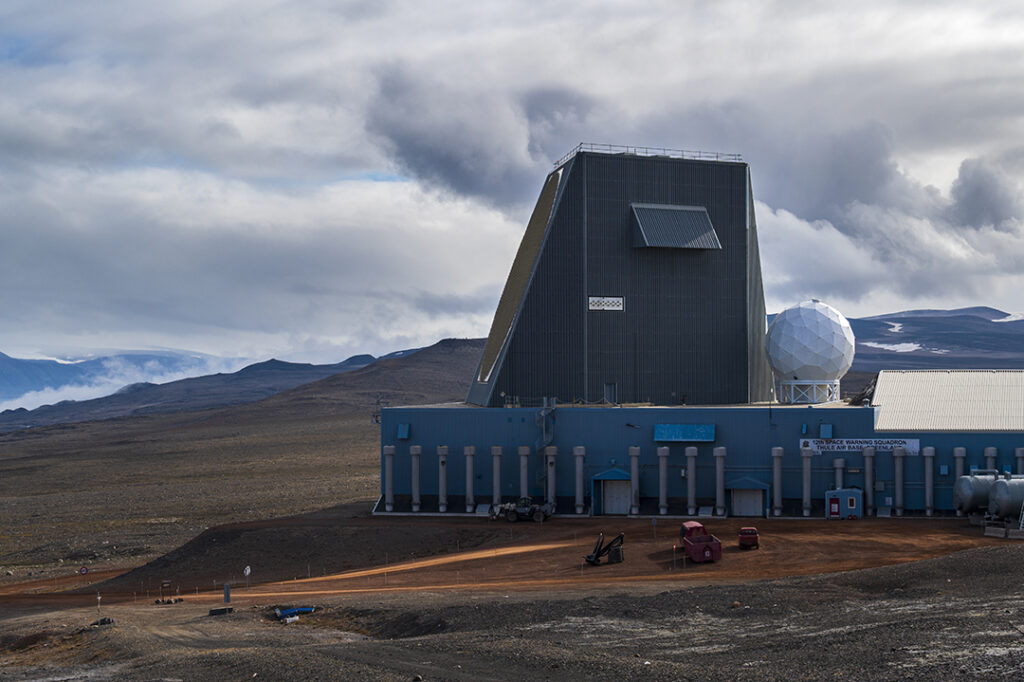ELENA FARNSWORTH
Things are heating up at the top of the world.
With heightened international tensions and a warming Arctic region, the United States’ National Strategy for the Arctic, released in 2022, prioritizes countering and deterring Russia and the People’s Republic of China in the High North. As such, the Pentagon is reallocating and increasing resources and future personnel at the U.S. Department of Defense’s northernmost installation, which was previously known as Thule Space Force Base (SFB). On April 6, 2023, the U.S. Department of Defense renamed it Pituffik Space Base, which recognizes Greenlandic cultural heritage and better reflects its role in the U.S. Space Force.
Pituffik Space Base, located on the northwestern coast of Greenland, is crucial in defending North America from any threats that may approach through the Arctic. Though Pituffik has acted primarily as a missile and defense post, it has increasingly hosted operations such as Noble Defender. These operations, along with a recent series of upgrades to equipment and facilities, demonstrate U.S. capabilities in deploying in austere, high-latitude forward operating locations (FOL) and in developing a Globally Integrated Layered Defense (GILD) network in the Arctic region.
Lasting Strategic Importance
A testament to the enduring friendship between the U.S. and the Kingdom of Denmark, Pituffikis the most northerly U.S. military base.
Pituffik was established as a Strategic Air Command installation to counter Soviet military presence in the Arctic. During the 1950s, it hosted squadrons of fighter jets and nuclear-capable bombers. However, with the construction of the Ballistic Missile Early Warning System in the 1960s, the base’s mission shifted toward aerospace defense.
Now, Pituffik is home to one of five Upgraded Early Warning Radars (UEWR) operated by the United States Space Force and, because of its location, constitutes the most important link in this radar chain. Greenland lies along the shortest flightpath between North America and Russia’s Western and Northern Military Districts, where the bulk of Moscow’s intercontinental ballistic missiles (ICBMs) and fighter jets are based. Strategically, Pituffik’s “top of the world” location helps provide space superiority, according to the U.S. Space Force.

New operations and maintenance contract
Pituffik operations present an enormous number of logistical and financial difficulties. Looking to invest in and upgrade its infrastructure and capabilities, the U.S. reached an agreement with Denmark and Greenland in 2020 on terms for future maintenance contracts. The agreement stipulated that companies bidding for contracts must be majority-owned by Greenland or Denmark interests and be based in Greenland.
A new operations and maintenance contract for the base, awarded to Inuksuk A/S in December 2022, is slated for U.S. $3.95 billion over the next 12 years. Inuksuk A/S is a 51/49% split partnership between major Greenland construction company Permagreen Greenland A/S and U.S defense contractor Vectrus. The contract began at the beginning of this year and runs through 2034.
The new Pituffik operation and maintenance contract reflects a push to place the work in the hands of the Greenlandic people, according to Marc Jacobsen of the Royal Danish DefenceCollege. It demonstrates the strengthening partnership between Greenland, Denmark and the U.S.
Operation Noble Defender
United States Northern Command (USNORTHCOM) conducted Operation Noble Defender 23-2 from January 15 through January 31, 2023. The Noble Defender series includes planned operations to demonstrate the capability and readiness to defend North America from attacks along the Arctic avenues of approach. This Noble Defender operation demonstrated that the U.S. and Canada are capable of deploying at will to austere Arctic forward-operating locations at high latitudes and of supporting a globally integrated layered defense network across the Arctic.
This latest iteration of Noble defender saw the deployment of the F-35A Lighting II, the most advanced fighter aircraft in the world, at Pituffik for the first time. The F-35 can operate in multiple roles in a range of harsh conditions, including temperatures of minus 40 degrees Fahrenheit. U.S. Arctic allies Canada, Denmark and Norway are among those nations purchasing F35s as their future mainstay fighters. Additionally, USNORTHCOM search and rescue (SAR) forces have honed all aspects of personnel recovery – from testing Arctic SAR equipment to rehearsing the recovery and repatriation of those in distress.
Campaigning at the top of the world
The National Defense Strategy emphasizes the importance of “campaigning,” which involves aligning U.S. activities to support defensive priorities and maintain its competitive advantage. Campaigning at the top of the world requires that the U.S. has the relationships and access to operate in the Arctic. Pituffik Space Base plays a critical role in this mission by providing a base for Arctic FOLs and GILD networks.
“For NORAD and USNORTHCOM, campaigning…includes military exercises in the northern latitudes to test and demonstrate capability, readiness and our will to operate,” Gen. Glen D. VanHerck, the commander of NORAD and USNORTHCOM, wrote in a 2022 commentary. “Executing large-scale joint and multinational force exercises under Arctic conditions exhibits credible deterrence while highlighting robust U.S. defense capabilities. Campaigning requires close work with regional allies, partners, organizations and institutions in the pursuit of shared objectives. We are stronger together, and our competitors know they do not benefit from the same relationships. Our integrated approach has a profound deterrent effect on competitors.”
Elena Farnsworth is a second-year master’s student studying International Security and Homeland Security at the Josef Korbel School of International Studies at the University of Denver. She is interning with the USNORTHCOM J3 as part of the NORAD and USNORTHCOM Volunteer Student Intern Program.

